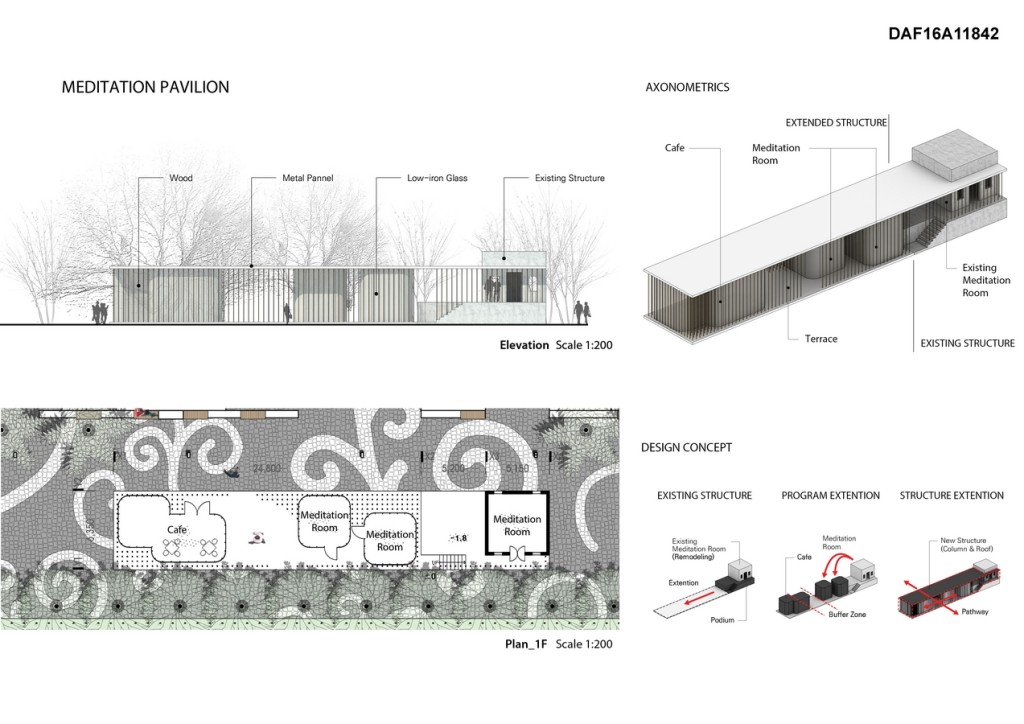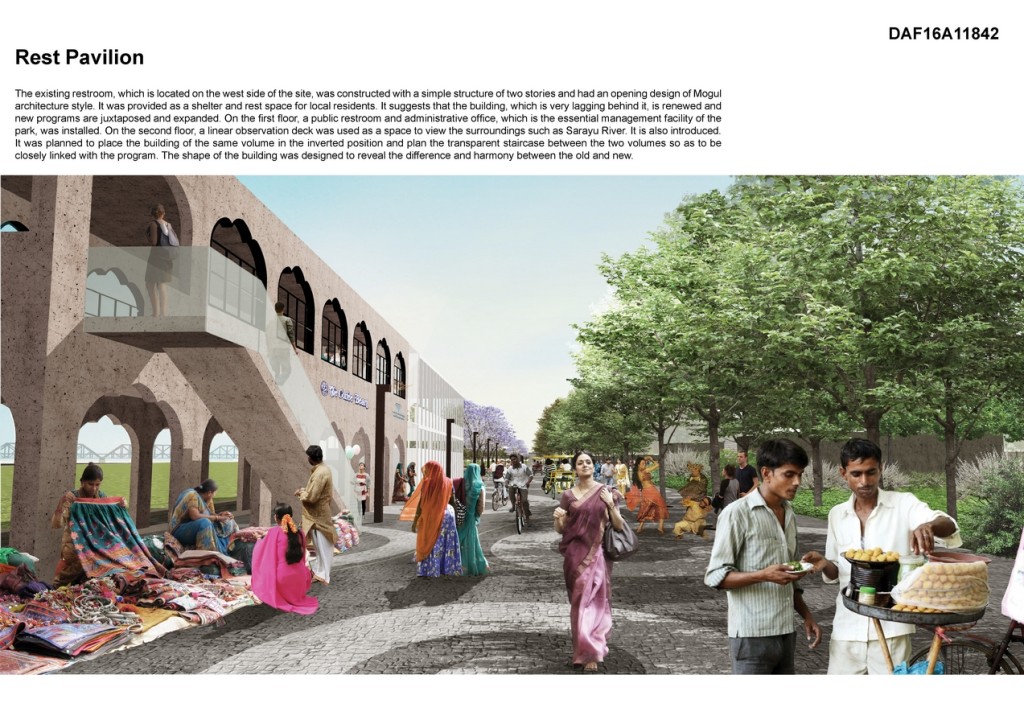As a result of the Korea-India summit in 2015, the Queen Huh Memorial Park Project will be a joint project to strengthen cultural and human exchanges between the two countries. It will reorganize the existing Queen Huh Memorial Park in the city of Ayodhya in India, It is an attempt to link parks with nearby urban organizations, commercial and cultural facilities by expanding parks.
First Award | DAF 2016 Awards
Category: Mixed Use (Unbuilt)
Participant Name: Sanghun Song
Team Members: Greg Chungwhan Park
Country: Korea

First, the existing Ghat site was moved to the vicinity of Sarayu River, and a plaza facing the Sarayu River was arranged around the Queen Huh Monument on the reorganized site, and a street parallel to the axis of the surrounding city organization was installed to induce the natural connection of the city flow. Secondly, it avoids the entire demolition of old buildings and remodels horizontally extended buildings. In this way, the architectural design has been reinterpreted in a modern way. These programs are located at the beginning and end of the street, Further activate. Third, materials that show local physical properties to represent Indian history and culture well, and materials that show modern physical properties like metal are used. Indigenous pattern of India, ancient city of Korea, It was planned as an architectural medium to communicate the history and culture of Korea and India using indigenous patterns as design elements.

Meditation Pavilion: The existing meditation room on the east side of the site is located on the existing GHAT and is used as a space for many locals to visit. It does not have architectural value, but it is a very important facility for local residents and it is a symbolic building that shows the life of the city. In order to preserve and reproduce this, a podium was installed to overcome the difference in level with the newly established street. In addition, contemporary reinterpreted meditation places were further arranged in parallel to reinforce existing programs and plan resting spaces and cafes to be newly created as healing and resting spaces.

Rest Pavilion: The existing restroom, which is located on the west side of the site, was constructed with a simple structure of two stories and had an opening design of Mogul architecture style. It was provided as a shelter and rest space for local residents. It suggests that the building, which is very lagging behind it, is renewed and new programs are juxtaposed and expanded. On the first floor, a public restroom and administrative office, which is the essential management facility of the park, was installed. On the second floor, a linear observation deck was used as a space to view the surroundings such as Sarayu River. It is also introduced. It was planned to place the building of the same volume in the inverted position and plan the transparent staircase between the two volumes so as to be closely linked with the program. The shape of the building was designed to reveal the difference and harmony between the old and new.
If you’ve missed participating in this award, don’t worry. RTF’s next series of Awards for Excellence in Architecture & Design – is open for Registration.
[button color=”black” size=”medium” link=”httpss://www.re-thinkingthefuture.com/awards/” icon=”” target=”false”]Participate Now[/button]
[g-gallery gid=”16434″]
- RTFA 2026 Entries Open
- Register
- Jury
- GADA 2025 Results
- Previous
- Results | RTFA 2024
- Results | GADA 2024
- Results | GADA 2023
- Results | RTFA 2023
- Results | GADA 2022
- Results | RTFA 2022
- ACDA 2022 Results
- Results | GADA 2021
- Results | RTF Awards 2021
- Results | ACD Awards 2020
- Results | RTFA 2020
- Results | GADA 2019
- Results | ACDA 2018
- Results | GADA 2018
- RTFA 2017 Results
- RTFSA 2017 Results
- RTFSA 2016 Results
- RTFSA 2015 Results
- Results | RTFA 2015
- Results | RTFA 2014





